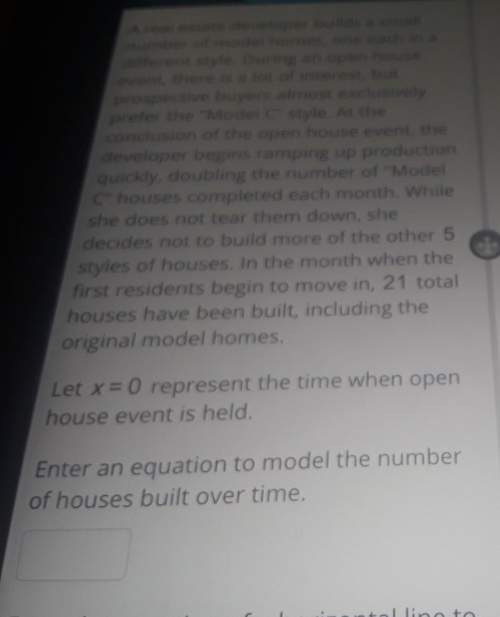
Mathematics, 24.03.2021 16:40 naomifelixwoo
A tax consultant studied the current relation between selling price and assessed valuation of one-family residential dwellings in a large tax district by obtaining data for a random sample of 16 recent sales transactions of one-family dwellings located on corner lots and for a random sample of 48 recent sales of one-family dwellings not located on corner lots. Both selling price (Y) and assessed valuation (X1) are expressed in thousand dollars, whereas lot location (X2) is coded 1 for corner lots and 0 for non-corner lots.
y x1 x2
78.8 76.4 0
73.8 74.3 0
64.6 69.6 0
76.2 73.6 0
87.2 76.8 0
70.6 72.7 1
86 79.2 0
83.1 75.6 0
94.5 78.1 0
71.2 76.9 1
64.3 68.5 0
73.1 73.2 0
96.8 77.5 0
82.4 76.2 0
81.6 75.1 0
76.8 77 1
77.2 73 0
73.7 73 1
88.6 77.2 0
74.7 73.4 0
91.2 78.8 0
86.6 77.3 0
82.7 76.5 0
87.8 76.8 0
Required:
a. Plot the sample data for the two populations as a symbolic scatter plot. Does the regression relation appear to be the same for the two populations?
b. Test for identity of the regression functions for dwellings on corner lots and dwellings in Other locations; control the risk of Type I error at .05. State the alternatives, decision rule, and conclusion.
c. Plot the estimated regression functions for the two populations and describe the nature of the differences between them.

Answers: 1


Another question on Mathematics


Mathematics, 21.06.2019 19:00
Teams of 4 are competing in a 1/4 mile relay race. each runner must run the same exact distance. what is the distance each teammate runs?
Answers: 1

Mathematics, 21.06.2019 21:00
Asequence has its first term equal to 4, and each term of the sequence is obtained by adding 2 to the previous term. if f(n) represents the nth term of the sequence, which of the following recursive functions best defines this sequence? (1 point) f(1) = 2 and f(n) = f(n − 1) + 4; n > 1 f(1) = 4 and f(n) = f(n − 1) + 2n; n > 1 f(1) = 2 and f(n) = f(n − 1) + 4n; n > 1 f(1) = 4 and f(n) = f(n − 1) + 2; n > 1 i will award !
Answers: 1

Mathematics, 21.06.2019 22:30
At the beginning of year 1, carlos invests $600 at an annual compound interest rate of 4%. he makes no deposits to or withdrawals from the account. which explicit formula can be used to find the account's balance at the beginning of year 5? what is, the balance?
Answers: 2
You know the right answer?
A tax consultant studied the current relation between selling price and assessed valuation of one-fa...
Questions

Mathematics, 28.07.2019 19:30

Physics, 28.07.2019 19:30

Spanish, 28.07.2019 19:30




Mathematics, 28.07.2019 19:30



Biology, 28.07.2019 19:30







Computers and Technology, 28.07.2019 19:30






